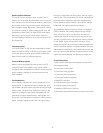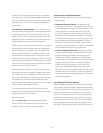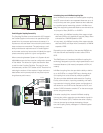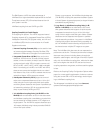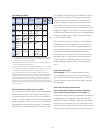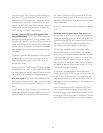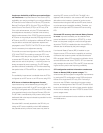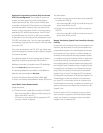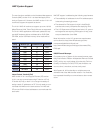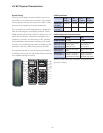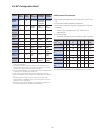Continuous Availability of NTP servers used as Exter-
nal Time Source: Improved External Time Source (ETS)
availability can now be provided if you confi gure different
NTP servers for the Preferred Time Server (PTS) and the
Backup Time Server (BTS). Only the PTS or the BTS can
be the Current Time Server (CTS) in an STP-only CTN.
Prior to this enhancement, only the CTS calculated the
time adjustments necessary to maintain time accuracy.
With this enhancement, if the PTS/CTS cannot access the
NTP Server or the pulse per second (PPS) signal from the
NTP server, the BTS, if confi gured to a different NTP server,
may be able to calculate the adjustment required and
propagate it to the PTS/CTS. The PTS/CTS in turn will per-
form the necessary time adjustment steering.
This avoids a manual reconfi guration of the BTS to be the
CTS, if the PTS/CTS is not able to access its ETS. In an
ETR network when the primary Sysplex Timer is not able
to access the ETS device, the secondary Sysplex Timer
takes over the role of the primary – a recovery action not
always accepted by some customers. The STP design
provides continuous availability of ETS while maintaining
the special roles of PTS and BTS as – signed by the cus-
tomer.
The availability improvement is available when the ETS is
confi gured as an NTP server or an NTP server using PPS.
NTP Server on Hardware Management Console:
Improved security can be obtained by providing NTP
server support on the HMC. If an NTP server (with or with-
out PPS) is confi gured as the ETS device for STP, it needs
to be attached directly to the Support Element (SE) LAN.
The SE LAN is considered by many users to be a private
dedicated LAN to be kept as isolated as possible from the
intranet or Internet.
Since the HMC is normally attached to the SE LAN, pro-
viding an NTP server capability on the HMC addresses
the potential security concerns most users may have for
attaching NTP servers to the SE LAN. The HMC, via a
separate LAN connection, can access an NTP server avail-
able either on the intranet or Internet for its time source.
Note that when using the HMC as the NTP server, there is
no pulse per second capability available. Therefore, you
should not confi gure the ETS to be an NTP server using
PPS.
Enhanced STP recovery when Internal Battery Feature
is in use: Improved availability can be obtained when
power has failed for a single server (PTS/CTS), or when
there is a site power outage in a multi site confi guration
where the PTS/CTS is installed (the site with the BTS is a
different site not affected by the power outage).
If an Internal Battery Feature (IBF) is installed on your
System z server, STP now has the capability of receiving
notifi cation that customer power has failed and that the
IBF is engaged. When STP receives this notifi cation from a
server that has the role of the PTS/CTS, STP can automati-
cally reassign the role of the CTS to the BTS, thus automat-
ing the recovery action and improving availability.
STP confi guration and time information saved across
Power on Resets (POR) or power outages: This
enhancement delivers system management improvements
by saving the STP confi guration across PORs and power
failures for a single server STP-only CTN. Previously, if
the server was PORed or experienced a power outage,
the time, and assignment of the PTS and CTS roles would
have to be reinitialized. You will no longer need to reinitial-
ize the time or reassign the role of PTS/CTS across POR or
power outage events.
Note that this enhancement is also available on the z990
and z890 servers.
55



